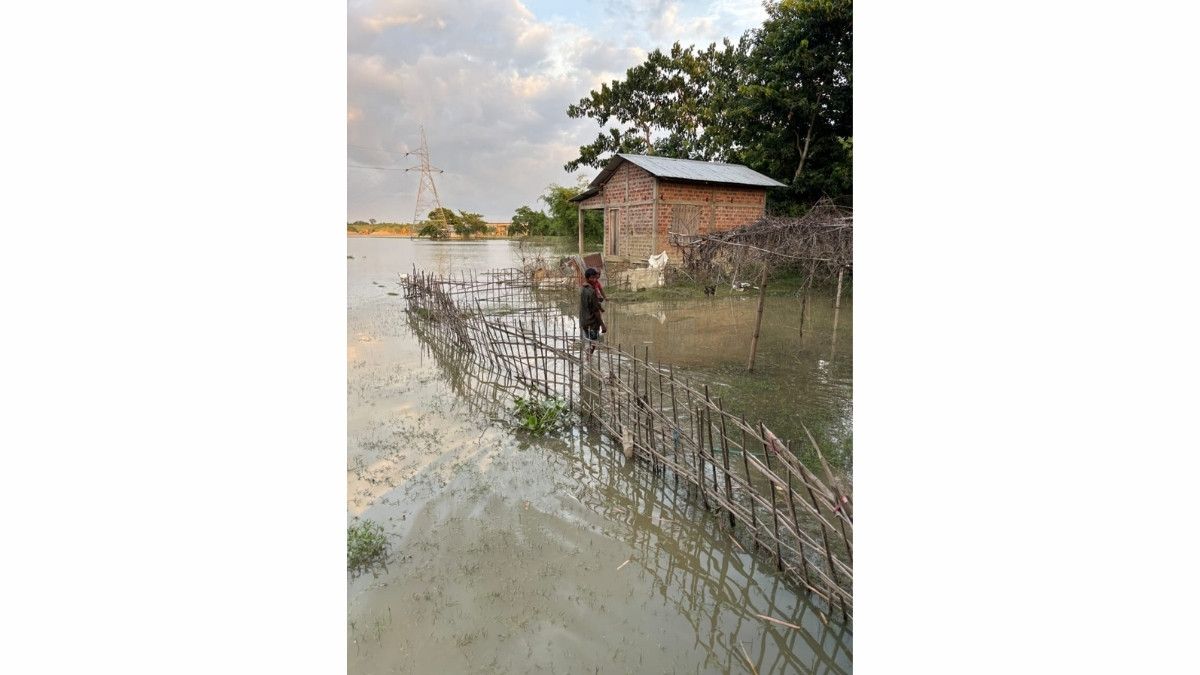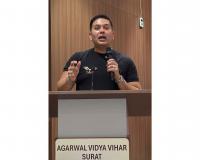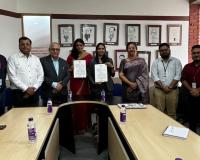Floods Are Disrupting India’s Agricultural Cycle

Across India, farming has always been closely tied to the rhythm of the monsoons. Most of the country’s rainfall arrives in a narrow seasonal window, and for decades, this pattern has guided when crops are sown, irrigated, and harvested. But that rhythm is increasingly out of step. In recent years, rains have become harder to predict - arriving in intense bursts or shifting entirely out of season. Alongside delayed sowing and uneven distribution, floods have emerged as one of the most damaging outcomes of this change.
From conversations with farmers across the country, a common thread has emerged: even a few days of heavy rain can now undo months of hard work. Waterlogging not only destroys standing crops but also damages the soil structure, flushes away nutrients, and leaves behind conditions that are hostile to immediate replanting. Many families lose both the current season’s harvest and the ability to begin the next one in time.
The effects are not just local. Agriculture remains a central pillar of the Indian economy, providing livelihoods to a significant portion of the population. When major food-producing states experience flood-related losses, the impact is felt through supply chains - from mandi prices to household food budgets. In places like Punjab, Odisha, Bihar and parts of eastern Uttar Pradesh, shorter growing seasons and increasing flood frequency are placing enormous stress on farming communities. In many cases, the fallback is government compensation or relief - which, while helpful, is rarely enough to rebuild completely.
Nowhere is this more visible than in Assam. Each year, large parts of the state are affected by flooding - not as isolated incidents, but as expected events. A significant portion of Assam’s land lies in flood-prone zones, and the scale of the damage far exceeds what most other states experience annually. In May and June 2025, the state recorded its highest rainfall since 1901.

Over 22 districts were affected. More than five lakh people were impacted, and thousands of hectares of cropland were lost. As part of the SEEDS emergency response team, I travelled to affected areas, including the remote Udharbond and Sonai blocks, where the situation was especially challenging. The fields were still waterlogged days after the rain had stopped. Stagnant water had begun to destroy any remaining crops. Farmers told us they had been preparing for harvest, only to lose everything within hours. Every passing day there was more challenging news. Two major landslides in Lumding and Jatinga. This was followed by the Harang bridge being washed away, cutting off road connectivity to Barak Valley.
Even with floodwaters all around, temperatures hovered around 40 degrees, and the humidity was intense. It is a combination we are seeing more often across India - heavy rainfall followed by or accompanied by humid heat- but it’s not how the season is supposed to behave. Going outside felt like a moist chamber and the heavy moisture clung to skin, drenched clothes and made breathing heavy. Monsoons used to bring some relief from summer temperatures. Now, it often brings both flooding and heat stress at once. In these conditions, we distributed shelter and hygiene kits to families whose homes had either collapsed or were still submerged.
What struck me most during these interactions was how familiar the process had become for the communities. Many of them had experienced similar floods just a year or two ago. Each time, they rebuild. But each time, it gets harder. Champarun Nessa Bharbuiya, a woman undergoing cancer treatment, lost her husband not long before the floods arrived. For 17 days, she and her children lived on the raised verandah of their house, surrounded by five feet of water. There was no clean drinking water, no electricity, and no privacy. Yet they stayed - cooking with what little they had, sharing whatever was available from neighbours.
Kulsuma Begum and her five children had taken shelter on the railway platform. Their home had been flooded for more than two weeks. They had no access to toilets or clean water, and were struggling to meet basic needs. A few kilometres away, Abdul Jalil Talukdar, a 77-year-old man with limited mobility, described how he had to be carried out of his home when water levels rose over eight feet. His family survived those early days with help from the local community.
What ties these experiences together is not just the immediate hardship, but the long-term disruption to farming livelihoods. Most of the families I met depend directly on agriculture or agricultural labour. When fields flood and crops fail, they don’t just lose a season’s income - they lose the resources needed to prepare for the next. They fall back on informal credit, reduce spending on food and health, or migrate temporarily in search of work.
In the face of these repeated shocks, it’s becoming clear that farming in Assam - and in many other parts of India - needs to adapt. There is growing awareness among communities that old patterns may not hold. Farmers now ask about what they can plant that will survive the water, or how to adjust sowing times to avoid peak flood periods. These are difficult questions, but they reflect a willingness to shift when given the right tools and support.
I do not believe there is a single fix. However, what I have observed suggests that any serious discussion about the resilience of the agricultural sector must begin at the community level. It must include better early warning systems, access to flood-tolerant seeds, raised-bed cultivation techniques, and storage solutions that protect both grain and input material. Above all, it must respect the knowledge and adaptability of farmers themselves - many of whom have already begun to make quiet changes, even without formal support.
It's this ground-level insight that continues to inform how SEEDS approaches resilience: through a framework that addresses not just the aftermath, but the full cycle of disruption and recovery. The framework centres on five pillars: Anticipate, Survive, Recover, Adapt, and Aspire. That means strengthening risk awareness and early warnings (Anticipate), ensuring safety and essentials during crises (Survive), supporting communities in rebuilding with dignity (Recover), enabling better decisions around land, housing, and agriculture (Adapt), and building the confidence and conditions to plan for the future (Aspire).
Floods are not new to Assam. The way they now overlap with heat, humidity, and prolonged recovery windows suggests something has changed. What do we do next - not only in disaster response, but in long-term planning - will determine whether farming remains viable for the next generation in regions like these.
The views expressed in this article are attributed to Arvind Sharma, Digital and IT Manager at Sustainable Environment and Ecological Development Society (SEEDS).






